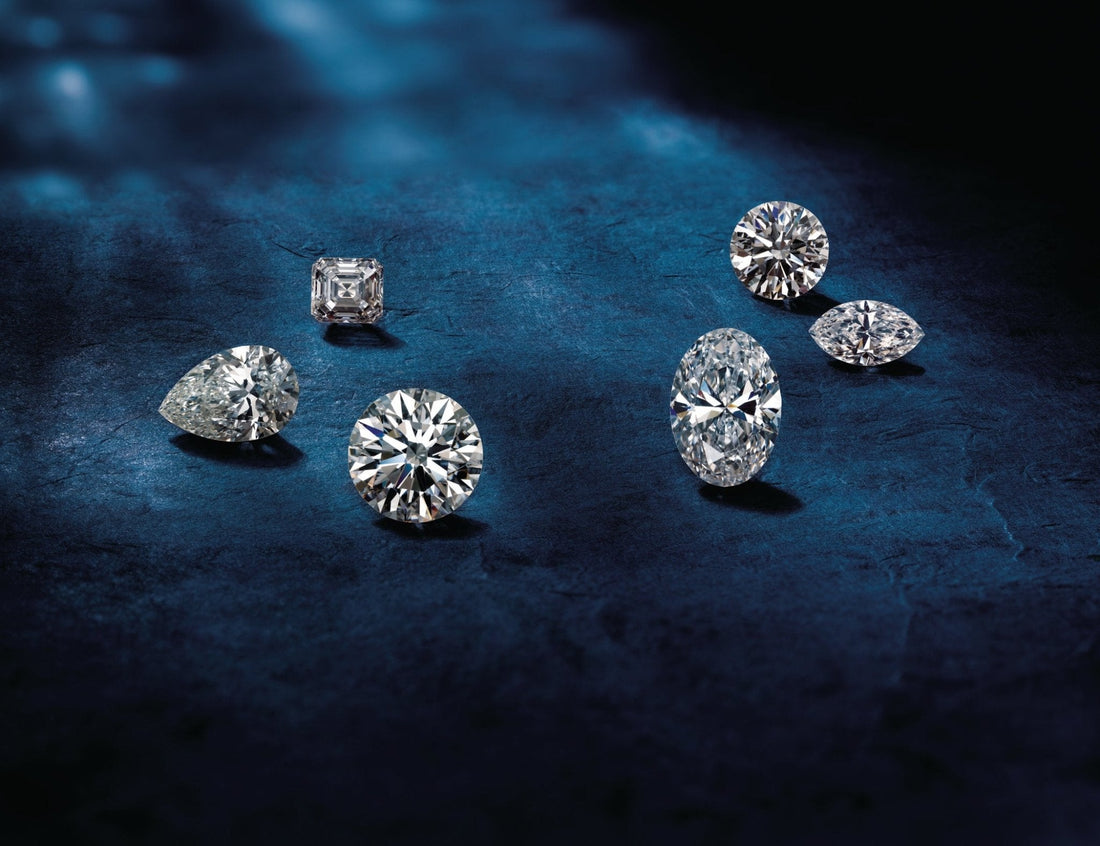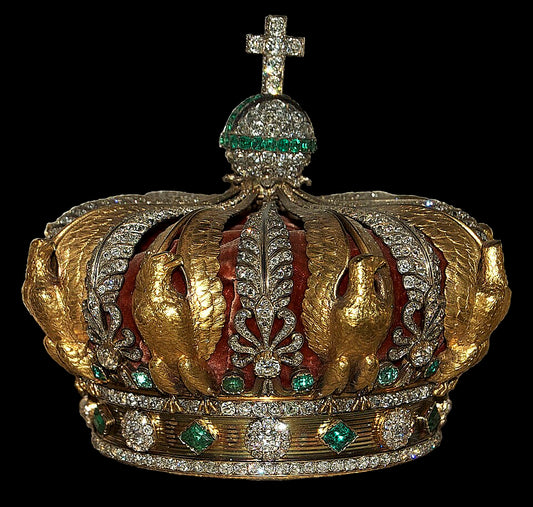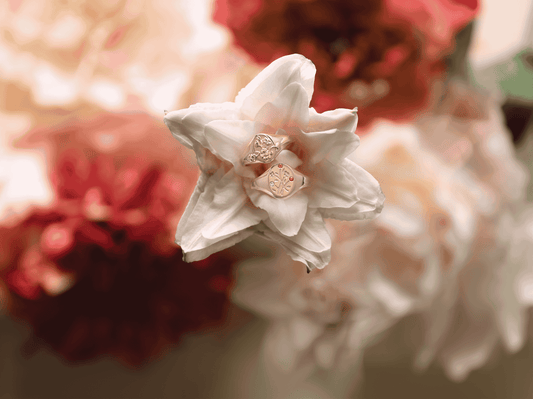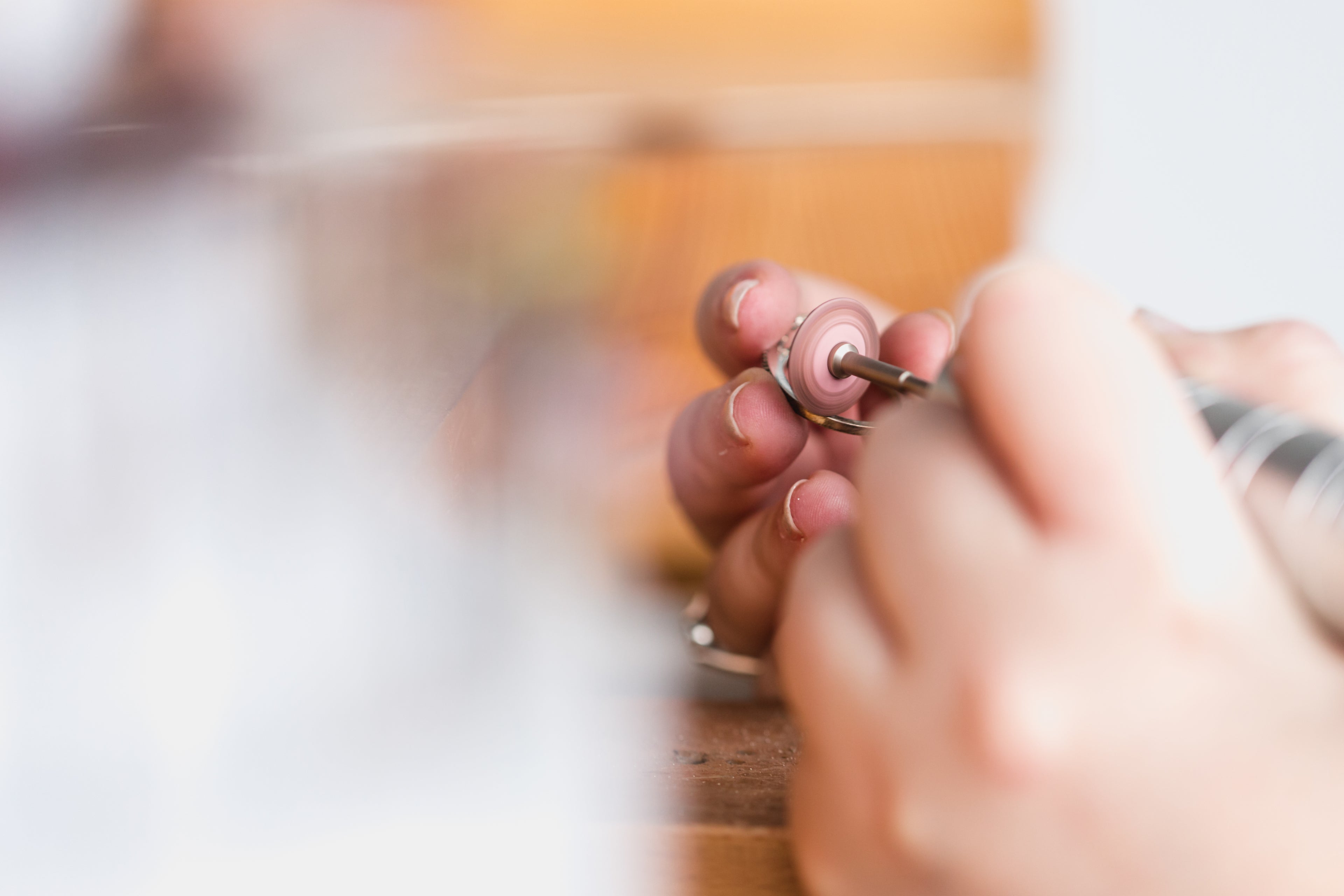What Are Diamonds?
Despite their beauty and rarity, diamonds have been associated with conflict and human rights violations. The diamond industry has been criticized for its lack of transparency and accountability, with many diamonds being sourced from war-torn countries and sold to fund armed conflicts. While the Kimberley Process Certification Scheme was established in 2003 to prevent the trade of conflict diamonds, and has largely eliminated these factors, many consumers are still turning to alternative options such as moissanites and lab-grown diamonds.
What Are Moissanites?
Moissanites are a type of silicon carbide crystal that was first discovered in Arizona in 1893 by French scientist Henri Moissan. They are named after him and are now grown in labs for use in jewelry. Moissanites have a similar appearance to diamonds, with a high refractive index and fire that rivals or exceeds that of diamonds. They are also more affordable than diamonds, with similar size and quality stones costing 50-90% less than diamonds. Moissanites are graded based on color and clarity, with near-colorless stones being the most valuable.
One disadvantage of moissanites is that they are not as hard as diamonds, with a rating of 9.25 on the Mohs scale compared to diamonds' 10. This means that they are more prone to scratching and damage over time. However, they are still a durable and long-lasting option for engagement rings and other jewelry. Moissanites are also a more eco-friendly option than diamonds, as they are created in labs without the environmental impact of diamond mining. They also do not have the same ethical concerns as diamonds, as they are not associated with conflict or human rights violations.
What Are Lab-Grown Diamonds?
Lab-grown diamonds are diamonds that are created in a lab using advanced technology that replicates the conditions under which natural diamonds are formed. They have the same physical, chemical, and optical properties as natural diamonds, but they are created in a matter of weeks rather than billions of years. Lab-grown diamonds are graded based on the same 4Cs as natural diamonds, and they are available in a range of colors and clarities.
One advantage of lab-grown diamonds is that they are more affordable than natural diamonds, with similar size and quality stones costing up to 40-50% less than natural diamonds. They are also a sustainable and ethical option, as they do not involve the environmental impact or human rights concerns associated with diamond mining. In fact, some lab-grown diamond companies are certified as carbon-neutral or even carbon-negative, meaning that they have a net-zero or negative carbon footprint.
However, some people argue that lab-grown diamonds lack the emotional and symbolic value of natural diamonds, as they are not rare or unique. They also argue that lab-grown diamonds may not hold their value over time, as they are not as rare or in demand as natural diamonds. Additionally, some consumers may prefer the natural imperfections and unique characteristics of natural diamonds.
Differences Between Diamonds, Moissanites, and Lab-Grown Diamonds
When it comes to choosing the perfect stone for your engagement ring or other jewelry, there are many factors to consider. Here are some of the key differences between diamonds, moissanites, and lab-grown diamonds:
Brilliance: Diamonds have a unique brilliance and fire that is highly valued, while moissanites and lab-grown diamonds have a similar or even higher level of fire and sparkle.
Hardness: Diamonds are the hardest natural substance on Earth, while moissanites and lab-grown diamonds are slightly less hard but still durable and long-lasting.
Rarity: Diamonds are rare and valuable due to their natural formation, while moissanites and lab-grown diamonds are more affordable and accessible due to their lab-grown production.
Color: Diamonds come in a range of colors, with colorless diamonds being the most valuable, while moissanites are typically near-colorless or slightly yellow.
Clarity: Diamonds are graded based on their clarity, with flawless diamonds being the most valuable, while moissanites are typically eye-clean and free from visible inclusions.
Price: Diamonds are the most expensive option, while moissanites and lab-grown diamonds are more affordable and accessible.
Diamond Pricing and Value
Diamonds are the most expensive option, with the price depending on the 4Cs and other factors such as fluorescence and cut quality. The average cost of a one-carat diamond ranges from $3,000 to $20,000, with larger or higher-quality stones costing even more. However, the value of diamonds can be subjective and influenced by market factors such as supply and demand. Some diamonds may hold their value or even appreciate over time, while others may lose value due to changes in the market or advancements in technology.
Moissanite Pricing and Value
Moissanites are a more affordable option than diamonds, with similar size and quality stones costing 50-90% less than diamonds. The price of moissanites depends on the size, color, and clarity, with near-colorless stones being the most valuable. The average cost of a one-carat moissanite ranges from $300 to $1,500, with larger or higher-quality stones costing more. While moissanites are less expensive than diamonds, they may not hold their value over time as well as diamonds.
Lab-Grown Diamond Pricing and Value
Lab-grown diamonds are more affordable than natural diamonds, with similar size and quality stones costing up to 40-50% less than natural diamonds. The price of lab-grown diamonds depends on the size, color, clarity, and cut quality, with near-colorless stones being the most valuable. The average cost of a one-carat lab-grown diamond ranges from $1,000 to $5,000, with larger or higher-quality stones costing more. While lab-grown diamonds are less expensive than natural diamonds, their value may be influenced by market factors and consumer demand.
Eco-Friendliness and Ethical Considerations
Diamond mining has a significant environmental impact, including deforestation, soil erosion, and water pollution. It also has a history of human rights violations and conflict. Moissanites and lab-grown diamonds are more eco-friendly and ethical options, as they do not involve the same environmental impact or human rights concerns. However, it is still important to consider the environmental and ethical practices of the specific companies and manufacturers that produce these stones. Look for companies that are transparent about their sourcing and production methods and prioritize sustainability and ethical practices.
Choosing the Right Stone for You
When it comes to choosing the perfect stone for your engagement ring or other jewelry, there is no right or wrong answer. It ultimately depends on your personal preferences, values, and budget. If you value rarity and symbolism, a natural diamond may be the perfect choice for you. If you prioritize affordability and sustainability, a moissanite or lab-grown diamond may be a better fit. Whichever stone you choose, make sure to do your research and choose a reputable and transparent company that aligns with your values.
Conclusion
Diamonds, moissanites, and lab-grown diamonds each have their own unique advantages and disadvantages. Diamonds are rare, beautiful, and valuable but come with environmental and ethical concerns. Moissanites are affordable, sustainable, and similar in appearance to diamonds, but are less hard and may not hold their value as well. Lab-grown diamonds are affordable, sustainable, and have the same physical, chemical, and optical properties as natural diamonds, but may lack the emotional and symbolic value of natural diamonds. Ultimately, the choice of stone comes down to personal preferences, values, and budget. Whatever stone you choose, make sure to choose a reputable and transparent company that aligns with your values.





